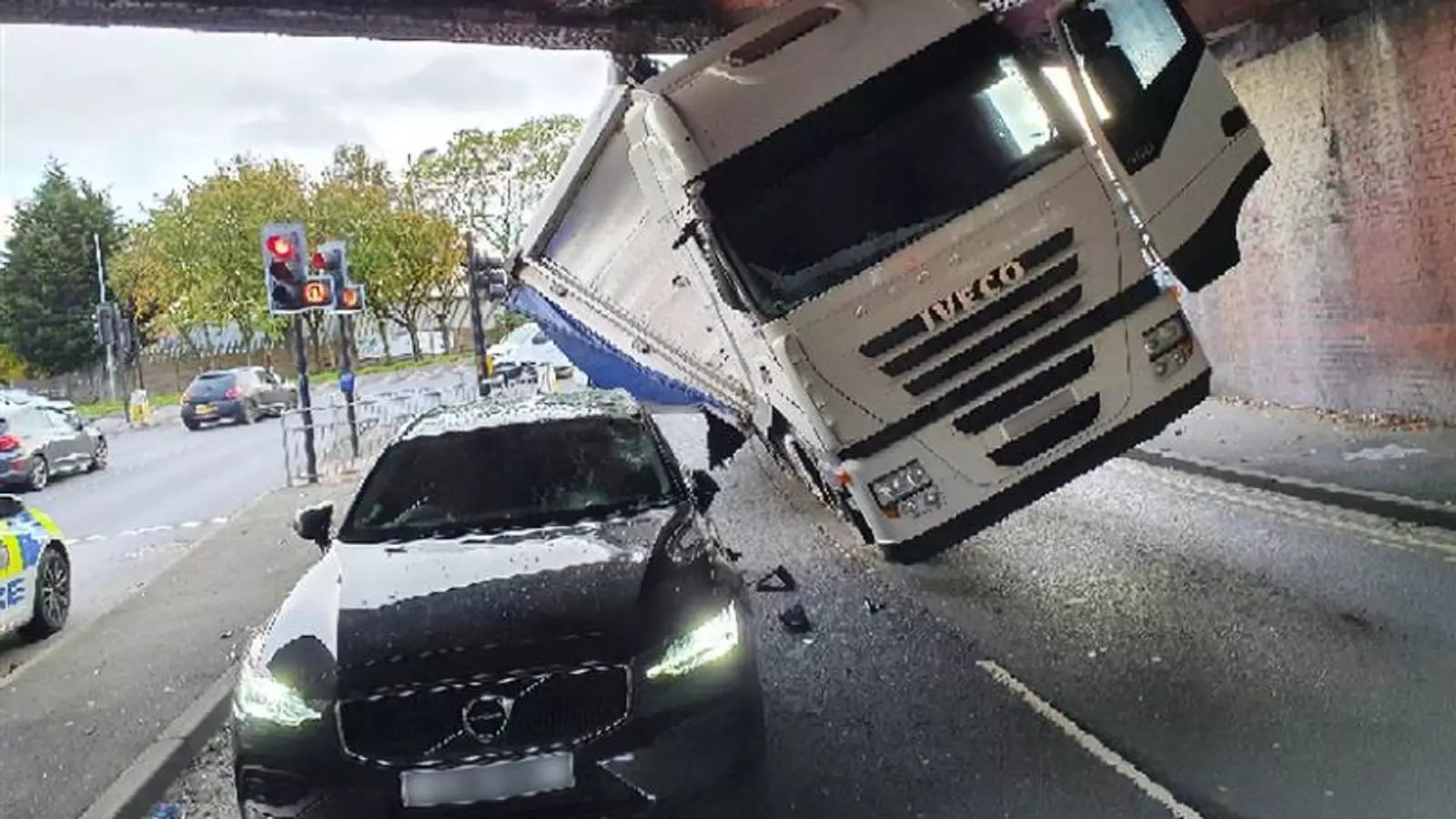In a chilling encounter with crime on the road, Ian Lee, a 60-year-old motorist from Wakefield, West Yorkshire, narrowly escaped a potentially fatal situation when his vehicle was struck by a stolen lorry. This incident, which occurred as he was returning home, serves as a stark reminder of the dangers posed by uninsured and reckless drivers. As Mr. Lee recounted his experience, the merciless strike of the stolen truck, equipped with cloned number plates, left his car mangled and him with lasting injuries. With the traumatic experience still fresh in his mind, Mr. Lee reflected on the accident, stating, “I was really, really lucky to get out of that one.” His case is not isolated; it highlights a growing concern regarding uninsured drivers across the UK.
The Motor Insurers’ Bureau (MIB) recently unveiled worrisome statistics detailing the prevalence of uninsured motorists on British roads. According to the MIB, on average, every 20 minutes, a person in the UK is involved in an accident with an uninsured or hit-and-run driver. This shocking frequency translates to at least one individual suffering significant injuries every day, often requiring lifelong medical care. The economic fallout from these incidents is staggering, estimated to cost the UK economy nearly £2.4 billion annually when factoring in emergency services, medical treatments, and lost productivity.
The statistics vividly illustrate the gravity of the situation and underline the urgent need for comprehensive preventative measures to address this issue. The MIB has launched its Operation Drive Insured campaign in collaboration with UK police forces aimed at removing uninsured drivers from the roads. This initiative will involve increased checks in regions identified as hotspots for uninsured driving.
In delving deeper into the MIB’s findings, it becomes clear that certain areas are disproportionately affected by uninsured drivers. The top postal codes for uninsured driving include hotspots primarily located in the West Midlands, with Birmingham accounting for multiple entries in the top 15. These areas exhibit a troubling trend of high uninsured driver activity, which not only endangers residents but also increases insurance premiums for law-abiding citizens.
While Croydon may have seen the highest volume of claims against uninsured drivers, its dense population resulted in a lower ranking on the hotspot list. This contradiction exemplifies the complexity surrounding the uninsured driving crisis; the issues are not confined to one demographic or geographic area but are widespread, affecting communities across the UK.
In an attempt to combat this troubling trend, police units have ramped up enforcement efforts by conducting targeted operations in regions identified as high-risk for uninsured motorists. It is a proactive measure that could potentially dismantle the networks that allow such reckless behavior to persist. Thus far this year, authorities have seized nearly 115,000 uninsured vehicles, a staggering number that underscores the extent of the problem.
The implications of these measures are significant. Drivers caught operating without insurance face harsh penalties, including a £300 fixed penalty notice and six points on their license. If their case escalates to the courts, the consequences can include unlimited fines and potential driving bans. With nearly a third of confiscated vehicles ending up crushed, the message is clear: driving uninsured deals substantial repercussions.
As the aftermath of Mr. Lee’s harrowing experience ripples through the media, it serves as an urgent call to action for all motorists. Awareness is paramount, and understanding the law surrounding uninsured driving can empower drivers to make informed decisions on the road. Promoting safe driving habits and urging friends and family to adhere to legal licensing and insurance practices can help create safer roadways for all.
The experience of Ian Lee stands as both a harrowing tale of survival and a poignant illustration of a larger systemic issue. The menace of uninsured drivers casts a long shadow over UK roads, resulting in trauma, economic strain, and loss. It is high time that we collectively address this pressing challenge, ensuring a safer driving environment for everyone.

